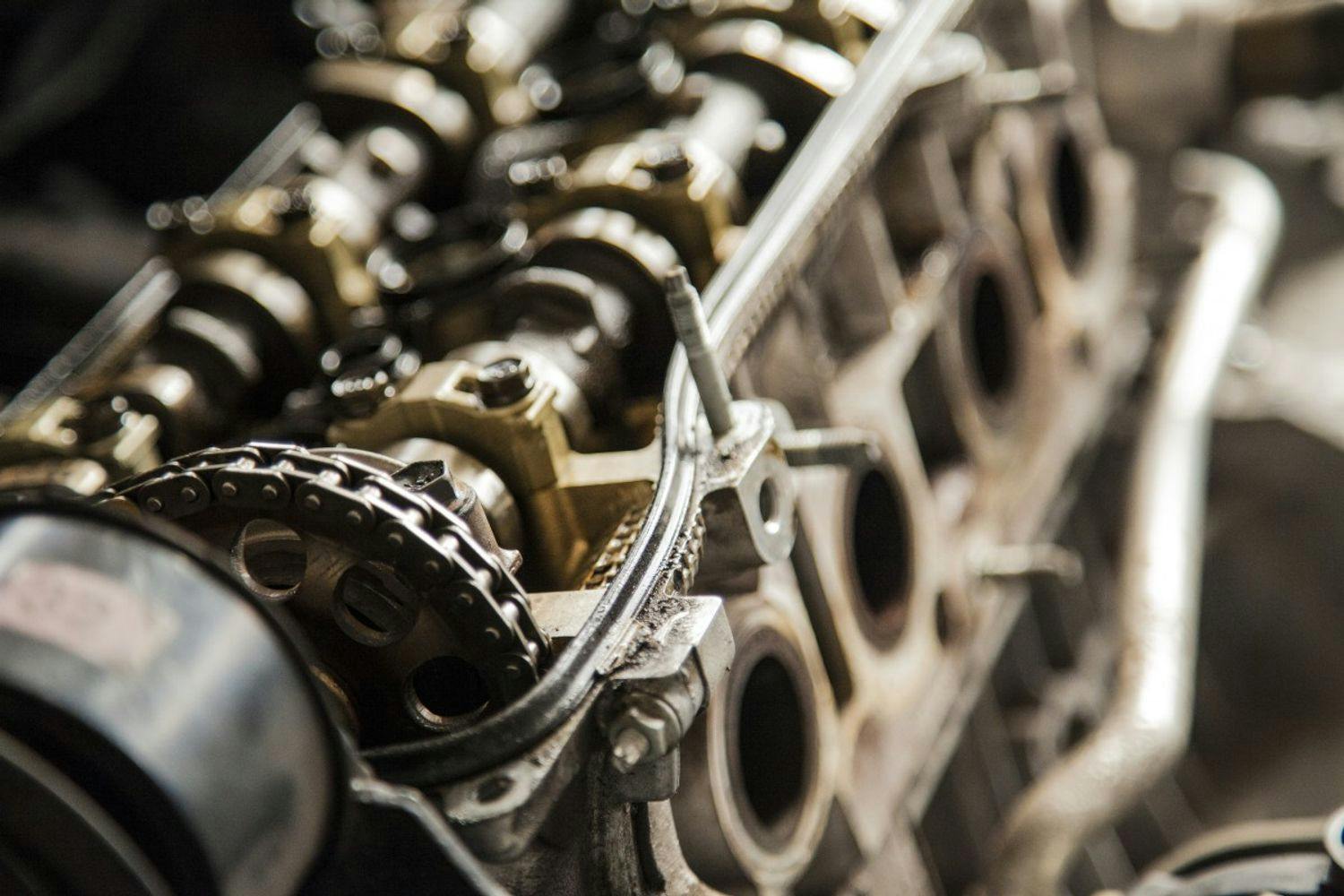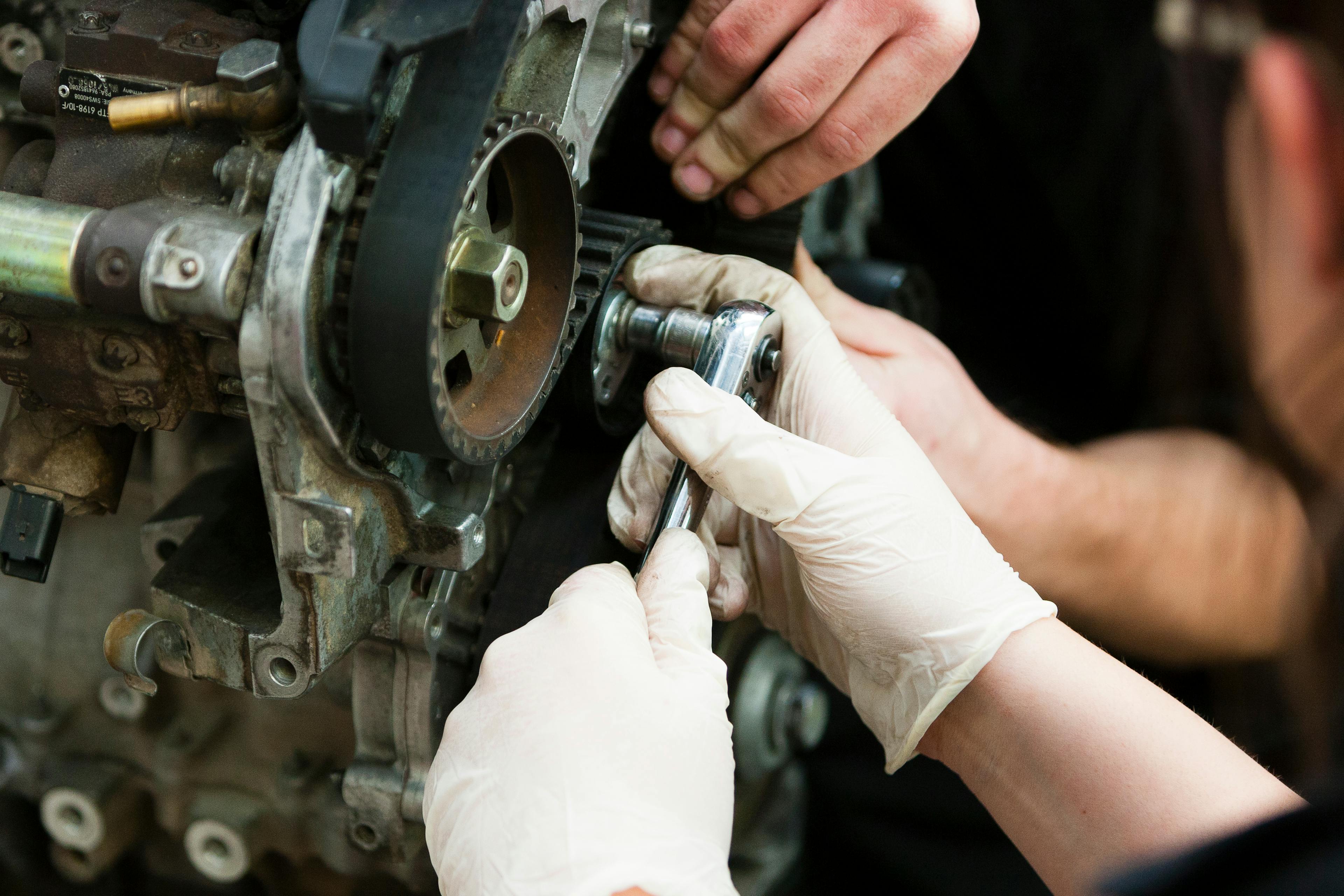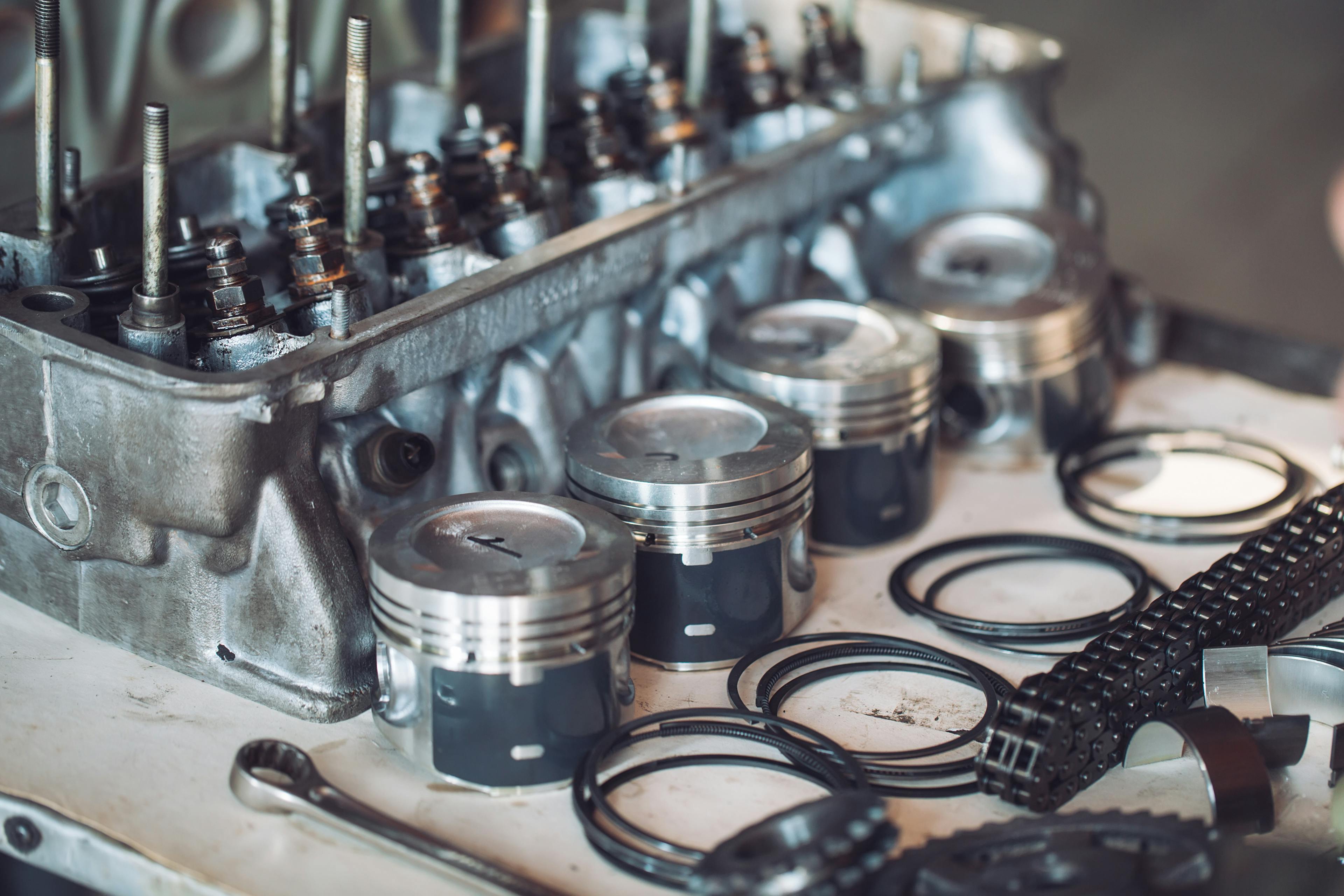Timing belt: What is it for, and how often to change it?

Timing belts play a key role in internal combustion engines. They synchronize the crankshaft and camshaft rotation to ensure proper valve timing, allowing for efficient engine performance.
In this article, we will shed light on the function of timing belts, what they are made of, and when to change them.
Spis treści
Timing Belt vs. Timing Chain
To begin with, let's get clear on terms. You must have heard that there is a timing belt and a timing chain. The timing belt is toothed, made of high-quality rubber, and covered with a protective cover.
The timing chain is made of metal, similar to a bicycle chain. Its activity takes place inside the engine. Therefore, it is lubricated by the engine oil, which must be changed regularly according to the type of vehicle and driving style. The chain does not need to be replaced if it has no problem.
Types of Timing Belts
There are three main types of timing belts used in automotive engines:
1. Trapezoidal Tooth Profile
The trapezoidal tooth profile is the most common type of timing belt. It features trapezoidal-shaped teeth that fit into corresponding grooves on the pulleys. This design provides excellent grip and durability, making it suitable for a wide range of applications.
2. Curvilinear Tooth Profile
Curvilinear tooth profiles, such as the HTD (High Torque Drive) or GT (Gilmer Tooth) belts, have rounded teeth that provide better load distribution and reduced tooth wear. They offer improved power transmission and are often used in high-performance engines.
3. Modified Curvilinear Tooth Profile
Modified curvilinear tooth profiles, like the PowerGrip GT2 and GT3 belts, are designed to reduce backlash and improve tooth engagement. These belts offer high torque capacity and superior performance in demanding applications.
Materials and Production of Timing Belts
Timing belts are made of different materials to meet specific performance requirements. Some common materials include:
1. Neoprene
Neoprene is a popular material for timing belts due to its excellent resistance to oil, heat, and wear. It is often reinforced with glass or aramid fibers to increase tensile strength and durability.
2. Polyurethane
Polyurethane timing belts offer excellent chemical resistance and excellent mechanical properties such as high wear resistance and low elongation. They are usually reinforced with steel or aramid fibers to increase strength.
3. Rubber
Rubber timing belts are cost-effective and provide good flexibility, making them suitable for a wide range of applications. However, they may not be as durable as other materials, such as neoprene or polyurethane.
Timing belts are manufactured using a variety of processes, including pressing, extrusion, and calendering. During production, the belt material is formed into the desired shape, and the reinforcing fibers are embedded in the belt structure.
Checking Timing Belt
You will not normally see the timing belt under the hood. It is hidden under metal and plastic covers. Your mechanic can remove one of the covers and see the timing belt's condition.
Can the Timing Chain Also Fail?
Yes. Timing chain problems are not uncommon. Cars with high mileage are the riskiest. The timing chain is exposed to wear and tear over time.

Engine Oil Classification Explained
Engine oil plays a major role in the life of the timing chain. If it is of poor quality or there is not enough of it, it can cause faster wear of the timing chain.
Maintenance and Replacement of Timing Belts
Proper maintenance and timely replacement of timing belts are essential to prevent engine damage and ensure optimal performance. Some maintenance tips include:
Regular inspection of the timing belt: Check the timing belt for signs of wear, such as cracks, fraying or missing teeth. In case of these problems, it is necessary to replace the distributions.
Follow the manufacturer's recommendations: You can find the replacement interval in your vehicle's user manual. In general, timing belts should be replaced every 90,000 to 160,000 kilometers (60,000 to 100,000 miles).
Replacement of Related Components: When replacing the timing belt, it is a good idea also to replace the water pump and idler pulleys, as these components can wear out over time and affect timing performance.
Common Problems and Solutions
Some common timing belt problems and their solutions include:
1. Premature Wear
Cause: Excessive tension, misaligned pulleys, or contaminated belt surfaces.
Solution: Check and adjust the belt tension according to the manufacturer's specifications. Ensure the pulleys are properly aligned and clean the belt surfaces to prevent premature wear.
2. Belt Noise
Cause: Incorrect tension, misaligned pulleys, or damaged components.
Solution: Inspect the tensioner, idler pulleys, and other components for signs of wear or damage. Adjust the belt tension and correct any misalignments to minimize belt noise.
3. Belt Slippage
Cause: Insufficient belt tension or oil contamination.
Solution: Adjust the belt tension to the recommended level, and clean or replace any components leaking oil onto the belt.
4. Tooth Shearing
Cause: Excessive loads, misaligned pulleys, or foreign objects caught in the belt.
Solution: Identify and correct the underlying cause, such as adjusting the belt tension, realigning the pulleys, or removing foreign objects from the belt path.
Timing Belt Replacement Is Expensive

The main task of the timing belt is the timely opening and closing of the valve with the movement of the pistons up and down. Get your wallet ready. Timing belt replacement is one of the most expensive maintenance you can experience with your car.

Engine Pistons: How do they work?
Can the timing belt exceed the recommended interval? Yes, in some cases. However, it can happen that the belt is damaged long before it is recommended to replace it. In most cases, premature timing belt failure is caused by leaking water pumps, improper tension, and when the timing belt is soaked in engine oil.
Conclusion
The timing belt is a crucial component; thus, avoiding problems with it saves you a lot of stress. Regular maintenance, using quality engine oil, and replacing the oil regularly are cheaper than replacing the timing belt due to neglected maintenance.